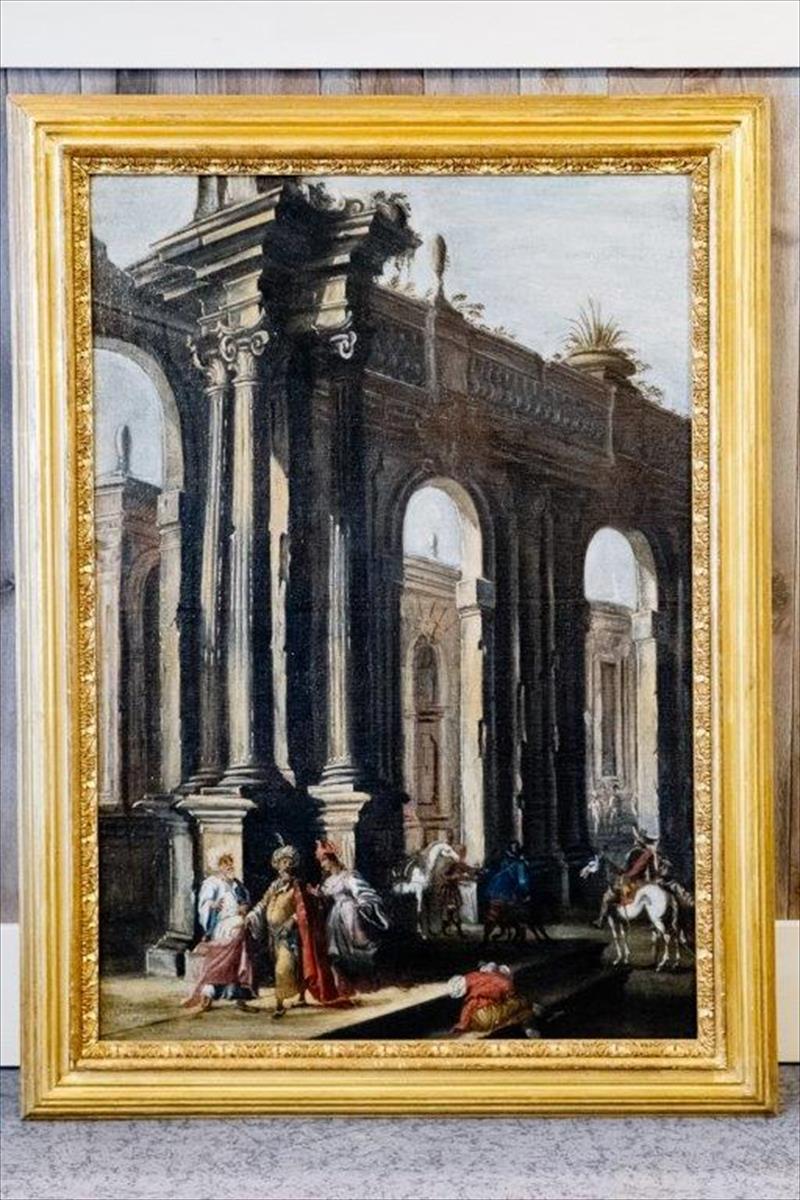Architectural Capriccio, oil on canvas – Rome, late 17th / early 18th century
The painting depicts a majestic classical ruin, constructed with rigorous perspective: Corinthian columns, rounded arches, marble balustrades, and architectural vistas stand solemnly in a play of light and shadow.
The foreground is animated by gracefully dressed figures, introducing a suspended narrative—of travel, of waiting, perhaps of courtly life.
Highlights on garments and architectural elements, vibrant chromatic accents, and carefully balanced contrasts contribute to a sense of depth, movement, and atmosphere.
A work of refined and educated hand, with strong scenographic impact, likely intended for an intellectual or aristocratic patron.
The painting, entirely original and well preserved, has been professionally cleaned, relined, and mounted in a newly crafted frame, hand-carved and gilded with gold leaf in a style faithful to the period.
For its stylistic and compositional features, the work can be attributed to the circle of Alberto Carlieri, a painter active in Rome between the late 17th and early 18th centuries. A pupil of Andrea Locatelli, Carlieri is known for his architectural capriccios populated by theatrical, refined figures and set within imagined classical ruins rendered with precise perspective and formal harmony.
The architectural capriccio is a pictorial genre born in the 17th century: a form of artistic invention in which the painter envisions ruins and classical structures that never truly existed, blending imagination, cultural depth, and symbolic meaning.
Highly appreciated by nobles, clergy, and scholars, these paintings were far more than landscapes: they invited reflection on the grandeur of antiquity, the fragility of time, the vanity of human works, and the deeper sense of history. Often chosen to adorn palaces, libraries, or convents, they represented a sophisticated balance between art, intellect, and imagination.
To choose an architectural capriccio today means to embrace a cultivated, evocative, and timeless form of painting—an artwork that opens space for thought and memory, enriching the gaze of those who enter and those who live within it.
- Material: oil on canvas
- Size: cm 120 x 156
- Condition: Restored
- Period: 17th century
- Style: Baroque
- State: Optimal conditions



